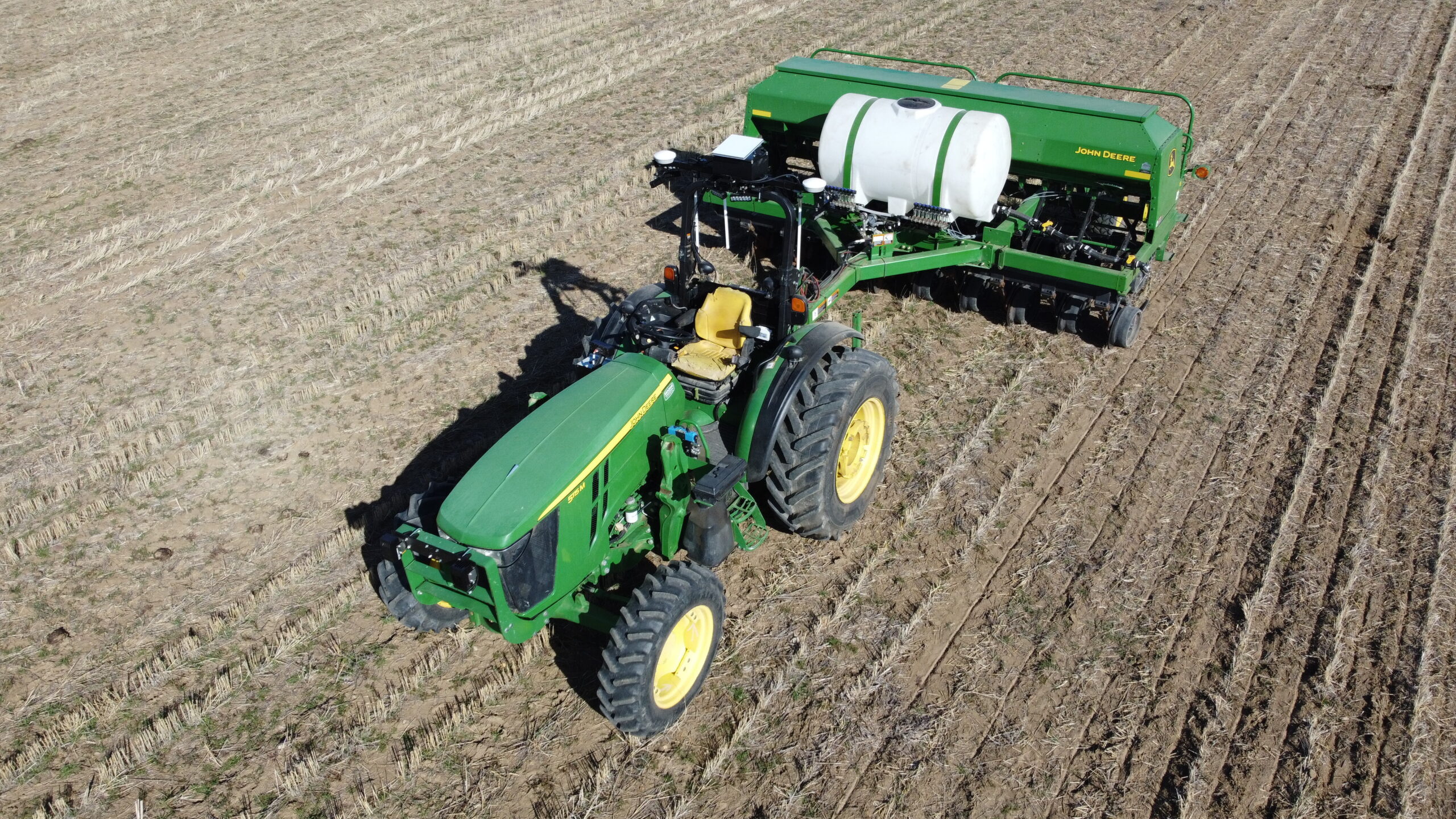Introduction
Before a single acre was seeded, we ran the numbers with Yirsa Farms, modeling every key variable to answer one critical question: What size of equipment would deliver the best performance and return? Autonomy is about more than removing the driver. It’s about rethinking the entire machinery equation to design the most efficient system possible.

Yirsa Farms repurposed their existing John Deere 5115M to pull a 15-foot John Deere 1590 No-Till Drill. Source: Sabanto
The first step in implementing Sabanto’s autonomous system at Yirsa Farms was an extensive equipment sizing study, aimed at aligning horsepower, drill width, and tendering efficiency with the farm’s operational goals. With a target of planting the entire operation in 20 days, and a minimum 6-hour interval between tendering, our objective was clear: maximize productivity without overcapitalization.
Analyzing Options
The analysis began with a broad review of tractor options, from 33 HP to 350 HP, mapping horsepower to the number of seeder shanks it could pull based on a 4.1 HP-per-shank benchmark and standard 10-inch shank spacing. Simultaneously, we evaluated industry averages of $3,000 per shank to estimate implement costs at each configuration.

Graph displaying tractor horsepower relative to total cost. Source: Sabanto
Next, we layered in agronomic requirements, specifically a 5 mph target planting speed and a 68% efficiency rate based on Yirsa Farms’ historical operations. To meet these requirements across a large-scale operation, three Sabanto autonomous systems would be needed.
Modeling Field Performance
These metrics helped model effective work rates (acres/hour) for various horsepower bands. We then integrated logistical constraints, including the drill’s seed capacity (52.5 bushels at 1.1 bu/ac) and fertilizer capacity (320 gallons at 4 gal/ac) to ensure that tendering schedules would meet the 6-hour window.
This analysis revealed two critical thresholds:
1. Low-HP Limitations: Below 100 HP, autonomy hardware became disproportionately expensive and weight capacity limited productivity.
2. High-HP Plateau: Above 120 HP, costs spiked due to larger machines and the lack of open station tractor configurations.
The Result
While 75 HP tractors were lower in cost, the 100-120 HP range provided greater flexibility and availability—important factors if additional horsepower was needed. Ultimately, the sweet spot emerged at 100-120 HP. This range enabled Yirsa Farms to operate three autonomous tractors around the clock, each pulling a 15-foot box drill, a standard, widely available implement in the industry. This configuration struck the ideal balance of cost, performance, and scalability, laying the groundwork for a cost-effective autonomous deployment.
We’d love to have you join our monthly newsletter list.
We promise not to overwhelm you — we share how autonomy is changing agriculture. Along the way, you’ll get to know our customers, the team we’ve assembled at Sabanto, and the groundbreaking things we’re accomplishing at farms across the country and beyond.
To get on the list, sign up below 👇
